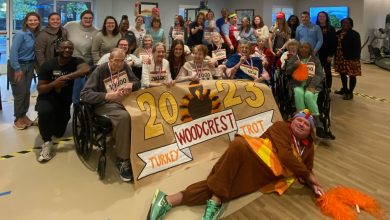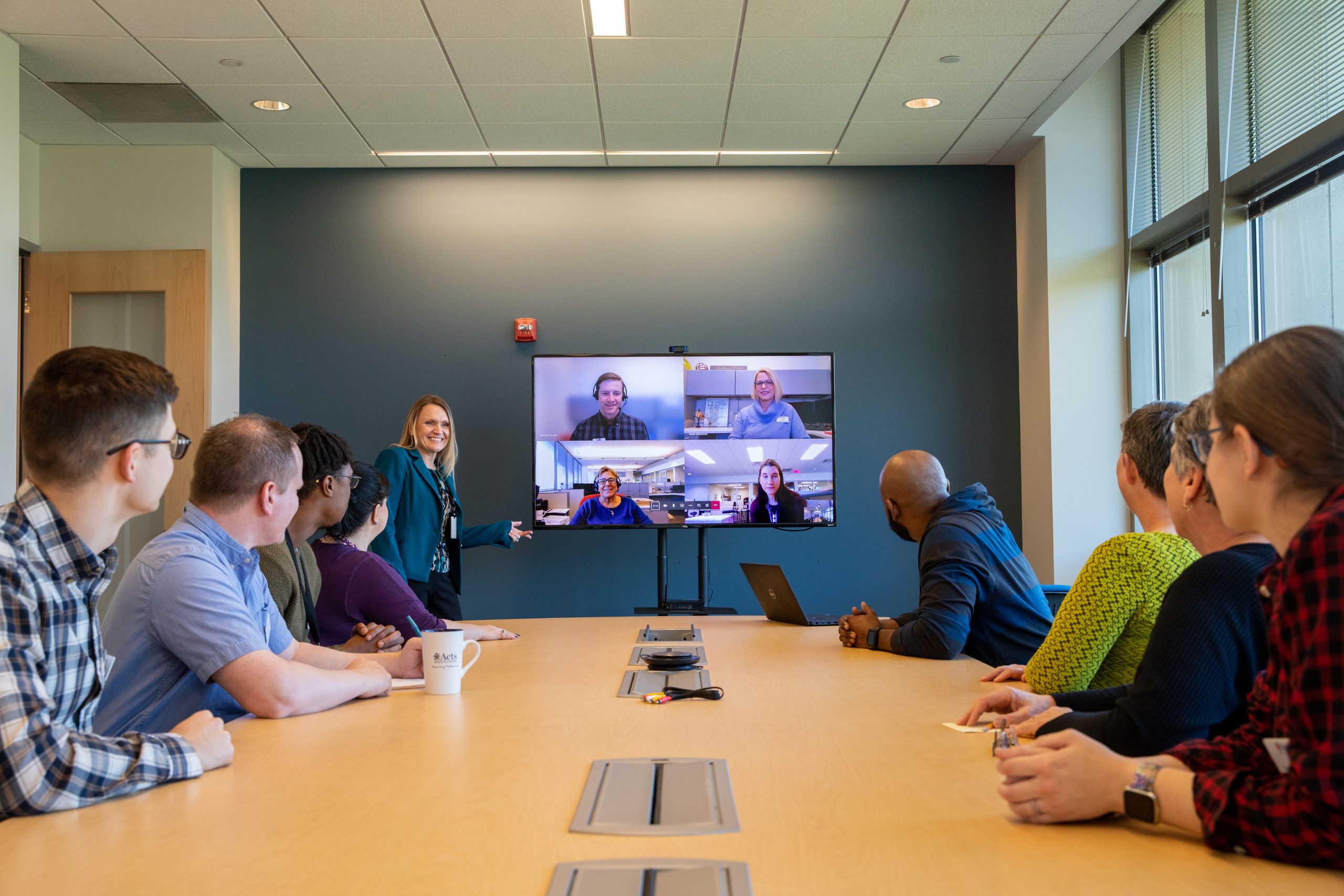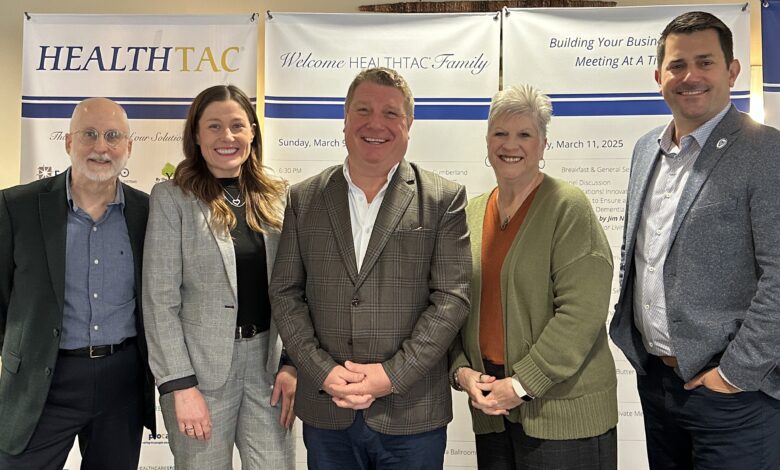
HEALTHTAC East 2025 Panel: Company Culture: How it Impacts Staffing and Reduces the Need for Agency, Part 1
By Jim Nelson | April 29, 2025
AMELIA ISLAND, FL — At the recent HEALTHTAC/Senior Living News annual east coast executive event we had four panels over the two-plus-days, with one of them discussing how company culture can impact staff retention and the need for agency.
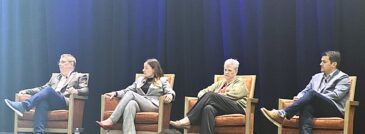
The panelists were Northbridge Advisory Services Managing Director Greg Anderson; Danielle Parker, the COO at GenCare Lifestyle; Kathy Rainwater-Roe; the director of community partnerships at Phoenix Senior Living; and Austin Steele, the chief strategy officer at Journey.
It seems obvious that it’s quite important to treat employees as the bloodline of the organization, so I began by asking Parker to walk us through GenCare Lifestyle’s approach to listening to and anticipating its employees’ needs.
“Personally, and in my organization,” she said, “we reject the notion of human resources because thinking of team members as resources really minimizes their impact. They’re so much more. I think anticipating their needs, hearing from them, creating a culture where they thrive and grow, is not only the moral and right thing to do, it’s kind and compassionate to take care of people, but it’s also a business strategy. They’re the ones taking care of our residents, so we want them to be happy and engaged. We were trending $3 million in contract labor, in all sorts of bad ways, and we needed to look at why. We found out that 90 percent of our staff were leaving within 90 days, and 80 percent of our workforce didn’t have a company email yet — and 100 percent of the time we were communicating with them through email. So, there was a problem there, a disconnect. We needed to change the way we were doing things, so we did away completely with annual reviews and went to a quarterly performance review system; if they weren’t staying a year, annual didn’t matter. We also leveraged our HR platform and created a community engagement channel, which is like a social media hub for our employees to engage.”
Next, Anderson was asked to talk about ways in which Northbridge has invested in culture, and how it has impacted staff retention.
“We focus on the applicant, the recruitment, the application, the onboarding, the whole experience of that associate, and tie all of our messaging very intentionally to our mission,” Anderson said. “If you don’t have a mission, if your mission is a little wonky, you’re really going to struggle with putting culture into place. Culture is something that we need to invest in, so we have developed a team that is led by our chief strategy officer, [to put] together as much information about how to take our mission, our core values, and infuse it into all of those different components.
“We also utilize the executive director to be part of it,” Anderson furthered, “but take it and let it breathe, let it work in the community. If you’ve been to one assisted living community, you’ve been to one assisted living community — [they’re] all different, and boy, all those executive directors will tell you that. But how do you make your culture resonate in the community? We invest in it; chief among all of our initiatives is really that messaging.”
Rainwater-Roe was then asked to explain Phoenix Senior Living’s career mapping.
“It really starts with the interview process,” Rainwater-Roe offered. “You want to ask your applicant, ‘Where do you see yourself in one year, in three years, in five years?’ You’ve got to know what that destination looks like — where are they headed and what’s their timeline — so that you can actively put a plan together and help them achieve that goal. You want them to think about it not as a position, but ‘What does the job really look like?’ Have them talk to you about what a day in the life of what they’re looking for looks like, rather than focusing on the title or that position.
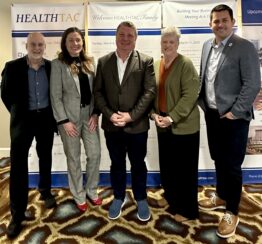
“Make sure that you think of whatever kind of development strategies are going to be needed,” she continued, “whether that’s going to be some additional leadership training or knowledge training, and they need to know that that’s going to be something that they have to take advantage of and work towards. You also have to discuss with them — and these are all things that we do at Phoenix Senior Living — that there’s going to be a personal investment. Are they really going to give the time and the energy and the personal sacrifice to make this happen? Unfortunately, we live in a society today where we want things instantaneously, we want to close our eyes and tomorrow morning we wake up and we’re an executive director, and it doesn’t work that way. So, they have to be committed to put in the work to make that happen. We have to prepare them for those roadblocks and those challenges and limitations that are going to happen. Are they going to be able to detour and get right back on that path and finish that journey?
“You also want to make sure that you’ve got consistent scheduled time for them with that supervisor and with the executive director,” Rainwater-Roe continued, “to go over what they’ve achieved so far, but to also keep them focused on the big picture and what their final destination is. You can take that big picture and break it down into small increments so that they can see what they’ve achieved. If we focus on that big picture, it seems so far out of reach, but if we focus on small increments and celebrate the small successes, then we can keep them more focused and keep them going on that journey.”
And how often do these meetings with employees happen at Phoenix Senior Living, I asked Rainwater-Roe.
“Once a month, once every six weeks,” she replied. “It’s important, again, to keep them focused and keep them in line. Anything longer than that, it gets forgotten, but you want to make sure that they are constantly working their plan.”
I turned to Steele next, to talk about something that Journey does called “The Journey Advantage.” There are a lot of components to The Journey Advantage, so I asked him to focus on how the company changed its pay schedule to accommodate its team members.
“With our Journey Advantage,” Steele responded, “we have a multi-faceted approach, and we’re really looking at what we call wrap-around benefits. These are maybe not directly pay, but other things that we can do to help them. So, we started talking to some of our care team members — we don’t call them employees because we believe that we’re all on the team together — and the timeliness of pay; they were wanting advances, et cetera, so we switched everybody to weekly pay. It has gone over exceptionally well. We’ve deployed that in our acquisitions. I was doing payroll at one point, and I thought that weekly pay was a bad idea because I felt like all I was doing was payroll, but it’s a huge lift as an operator, from a cash-flow perspective.
“Then we’ve partnered with a third-party company and gone even more advanced with a daily-pay option,” he added. “[When] they clock out, the next hour, they can have their pay in their bank account if they want. It costs them a nominal fee; if they want to wait until tomorrow, it costs them $0 and it costs us $0, so it’s really been intriguing. Our retention rates on the people that do the daily pay, they’re not leaving. We’re meeting them with their needs, and we’re really excited about that.”
I commented to Steele that I once worked for a company that paid us every week, and one of the benefits of that schedule is that there are four months a year with five weeks instead of four. So, I budgeted my life based on the usual four-week schedule, and four months a year I got a fifth paycheck, which felt like a bonus.
“And we do quarterly raises too, so that compounds to better raises throughout the year,” Steele concluded.
In part 2 of this article, we’ll learn about how quarterly reviews, incremental raises, and attendance bonuses can all help foster a winning company culture.


